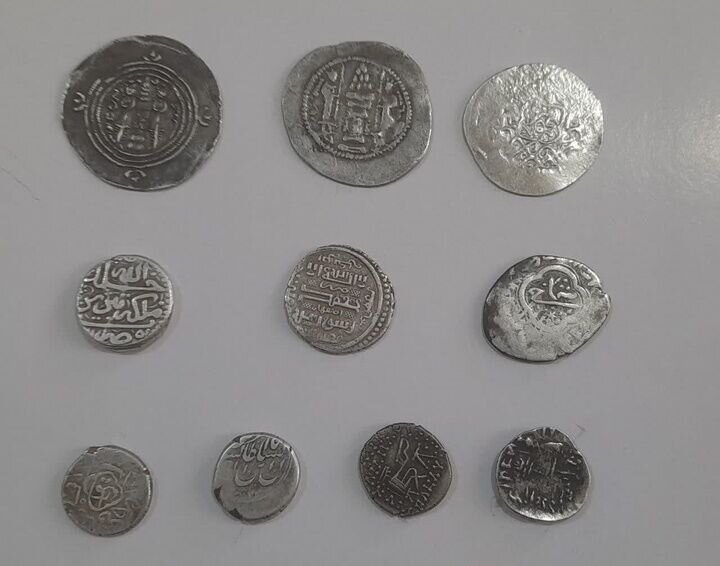Parthian, Sassanian, and Islamic coins recovered from smugglers

TEHRAN – Iranian authorities have recently recovered 10 historical silver coins from smugglers in Nahavand, a city in Hamadan province.
The coins date from the Parthian, Sassanian, and Islamic eras, a police commander in charge of protecting cultural heritage said on Sunday.
The illegally kept objects were found when policemen inspected the place of two suspects in Shaterabad county of the province, CHTN reported.
The suspects have been surrendered to the judicial system for further investigation and trial, the commander added.
The Parthian Empire, also known as the Arsacid Empire, was a major Iranian political and cultural power in ancient Iran. The Parthians largely adopted the art, architecture, religious beliefs, and royal insignia of their culturally heterogeneous empire, which encompassed Persian, Hellenistic, and regional cultures. At its height, the Parthian Empire stretched from the northern reaches of the Euphrates, in what is now central-eastern Turkey, to eastern Iran. Parthian wealth obtained through lucrative trade networks resulted in substantial patronage of the arts, in particular, relief sculpture, statuary (large and small scale), architectural sculpture, metalwork, jewelry, and ceramics; coins with images of Parthian rulers form another important category of objects.
In about 220 CE, the Sasanian dynasty of Iran introduced the concept of thin flan coins, issues that were struck in relief on both sides. In order not to produce intolerable stresses in the dies, since the thinner the material the more force necessary to make it flow into the recesses of the die’s design, the depth of relief on such coins was of necessity much shallower than with earlier currency. Such techniques spread by way of Byzantium to northern Europe, where the emperor Charlemagne struck thin flan deniers (small silver coins), or pennies, which became characteristic of both his own and neighboring kingdoms.
The Muslim conquest of Persia, also known as the Arab conquest of Iran, led to the fall of the Sasanian Empire of Iran (Persia) in ca. 651 and the eventual decline of the Zoroastrian religion. The rise of Muslims coincided with an unprecedented political, social, economic, and military weakness in Persia. The conquering Muslims at first mimicked the coinage of their predecessors. In the western provinces, they issued gold and copper pieces imitated from contemporary Byzantine coins, modifying the cross on the reverse of the latter somewhat to suit Muslim sensibilities. In the eastern provinces, the Arab governors issued silver dirhams that were copies of late Sasanian coins (mostly of those of Khosrow II; with the addition of short Arabic inscriptions on the margin and often the name of the Arab governor in Pahlavi; even the crude representation of the fire altar was retained.
AFM
Leave a Comment